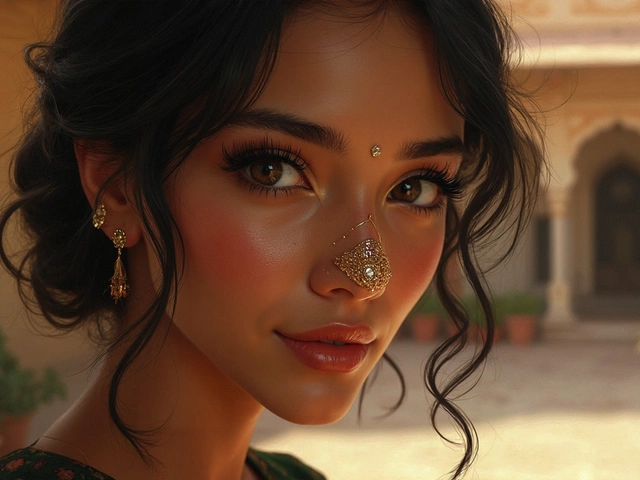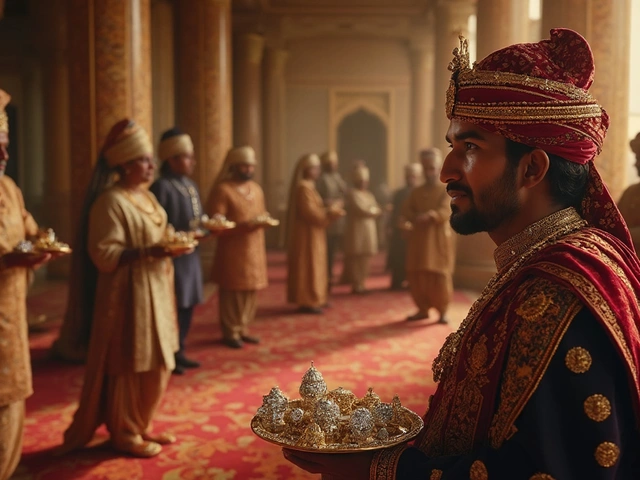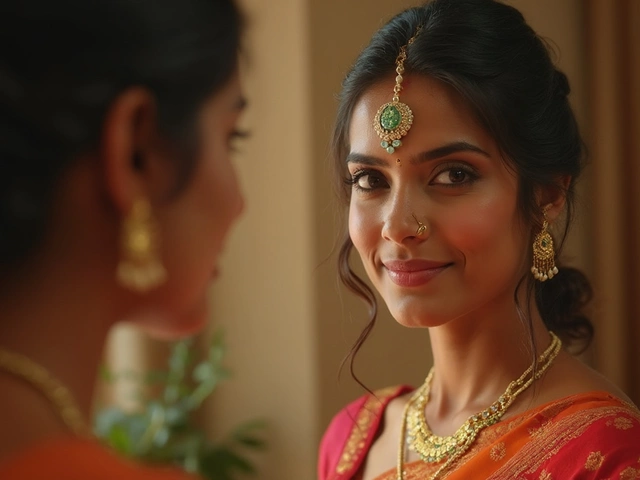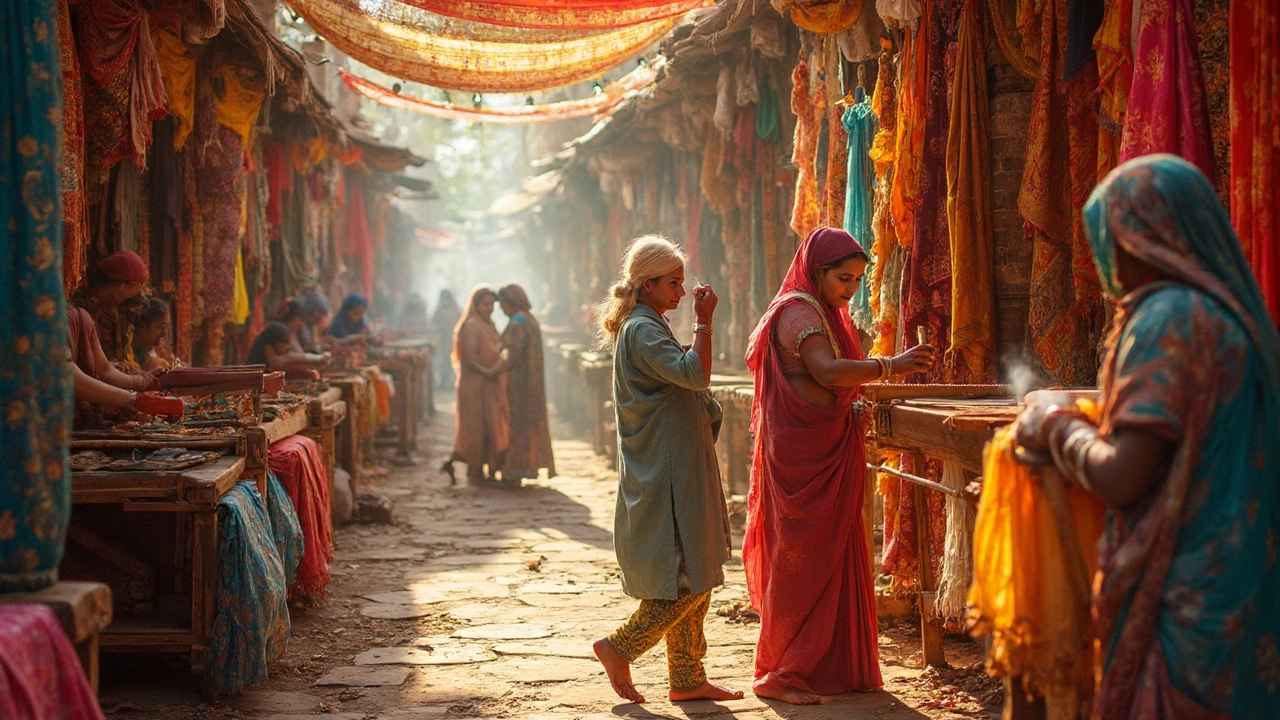
When you think of luxury fabrics in India, silk is probably the first thing that comes to mind. It's not just a fabric; it's a symbol of India's rich textile tradition and craftsmanship. We're talking about something that's been in the works for over five millennia! You see those incredible silk saris everyone raves about? That's only one part of the equation. The magic happens at every stage, from rearing silkworms to weaving this beloved fabric.
If you've heard of pashmina, you know the hype is real. It's the name that's often whispered in the world of luxury textiles, and trust me, there's a good reason for that. Found in the northern regions, Pashmina wool is obtained from a special breed of goats in Kashmir. Imagine wrapping yourself in a cloud—that's the sort of warmth and softness we're dealing with.
Brocade is another head-turner in the lineup. Think of it as wearable art that blends high-end aesthetics with deep-rooted cultural heritage. With intricate patterns and a touch of metallic threads, brocade fabrics are often reserved for weddings and grand events—places where you'd want to make an impression.
- Introduction to Indian Luxury Fabrics
- Silk: The Jewel of Indian Textiles
- Pashmina: Cashmere's Luxurious Cousin
- Brocade: Weaving Elegance and Tradition
- Real vs. Fake: How to Identify Genuine Fabrics
- Tips for Buying Luxury Fabrics in India
Introduction to Indian Luxury Fabrics
India is a country that's got textiles woven right into its history. For centuries, these threads have spun together stories of tradition, artistry, and luxury. And when we talk about expensive fabrics in India, we're talking about materials that are more than just cloth—they're an experience.
One of the most fascinating things about Indian fabrics is their diversity. You've got silk, pashmina, brocade, and even less known ones like khadi, all offering unique styles and textures. These aren’t just materials; they're part of the cultural fabric of India—pun intended!
Why Indian Fabrics Stand Out
The secret sauce? Well, it boils down to a mix of expert craftsmanship, quality raw materials, and deep-rooted tradition. Each type of fabric often boasts a specific regional style, like Benarasi brocade from Varanasi or Mysore silk from Karnataka.
Ever heard the saying, "You get what you pay for"? That's especially true here. Luxury textiles in India can be pricey because of the sheer amount of labor and skill that goes into creating them. For example, a single silk sari can sometimes take months to weave!
Economic Impact
India's textile industry is a huge economic player, contributing about 15% to the country’s export earnings. In 2023, India exported textiles worth billions, with luxury items earning a significant chunk of that. Take a look at this brief overview:
| Year | Textiles Export Value (in billion USD) |
|---|---|
| 2021 | 36.6 |
| 2022 | 40.2 |
| 2023 | 42.8 |
These numbers alone speak volumes about the importance and value attached to luxury textiles in the Indian market.
With a little knowledge and a keen eye, you can truly appreciate the history and craftsmanship that go into these luxurious Indian fabrics. Whether it's a silk scarf or a heavy brocade jacket, each piece has a story to tell—of artisans, of history, and of India itself.
Silk: The Jewel of Indian Textiles
When it comes to expensive fabrics in India, silk holds a special place in our hearts. But why is it so revered, you ask? Well, a lot of it has to do with its history and the incredible effort involved in making it. Starting from the procurement of silk thread from silkworms, which has been meticulously carried out for thousands of years, to the weaving of complex designs, every step adds to its allure.
Types of Silk in India
India isn't a one-silk-fits-all kind of place. We've got a variety of silks, each with its unique narrative:
- Mulberry Silk: The most popular type, often hailed for its softness and durability.
- Tussar Silk: Known for its rich texture and natural golden color.
- Bhagalpuri Silk: Famous in Bihar, this type has its own unique weave pattern.
- Muga Silk: Exclusively found in Assam, known for its natural sheen that improves with aging.
Why Is Silk So Expensive?
Silk production is no joke. Imagine nurturing thousands of silkworms, harvesting their cocoons, and then pretty much unwinding them like you'd unravel a ball of yarn. This painstaking process is what makes silk an absolute favorite—and that's before it even gets woven into those stunning saris and fabrics we adore.
The cultural value also adds to the cost. Wearing a gorgeous silk garment, especially on festive occasions, is like wearing a piece of art passed down through generations.
Where to Buy Genuine Silk?
In a market full of imitations, getting your hands on the real McCoy can be tricky. Look for certification marks, like the Silk Mark India tag, which ensures authenticity.
If you're traveling through India, cities like Varanasi, Mysore, and Kanchipuram are must-visits for picking up authentic, high-quality silk.
By understanding the story behind silk, its making, and where to get the real stuff, you're armed with the know-how to appreciate this luxury textile even more!
Pashmina: Cashmere's Luxurious Cousin
Now, if you're wondering about Pashmina and what makes it so special, picture this: it's the cream of the crop, even when lined up against Cashmere. While both hail from the Himalayas, Pashmina comes from a particular kind of goat known as the Changthangi or Pashmina goat found in the Ladakh region of India.
Here's what sets Pashmina apart. The wool is collected from the underbelly of the goat during the spring molting season. Seems simple, right? Well, the devil's in the details. The fibers are incredibly thin, measuring under 15 microns in diameter. To put that in perspective, human hair is about 75 microns thick. Each shawl takes the wool from four goats and countless hours of meticulous hand weaving.
Identifying Genuine Pashmina
Given its popularity, the market is flooded with fakes. So, how do you ensure you're buying the real deal? First off, look for the Certified Handmade Pashmina mark. This signifies it's not machine-made. Then, there's the burn test. Genuine Pashmina will smell like burnt hair when you burn a fringe—a little tip you might find useful if you're in a dilemma at a market!
Why Pashmina is Pricier
You might be thinking, "Why is Pashmina so expensive?" Well, quality doesn’t come cheap. Artisans spend months crafting a single piece, each thread a testament to their patience and skill. The result? A high-end accessory that offers unparalleled warmth and elegance.
| Feature | Pashmina | Cashmere |
|---|---|---|
| Diameter (microns) | <15 | 16-19 |
| Region | Ladakh, India | Himalayan regions (broader) |
| Production Time | Months for one shawl | Varies (often less time) |
So when you're splurging on luxury textiles in the form of Pashmina, remember you're not just buying a piece of fabric—you're investing in centuries of tradition, artisanship, and a cultural legacy that goes way beyond the thread count.
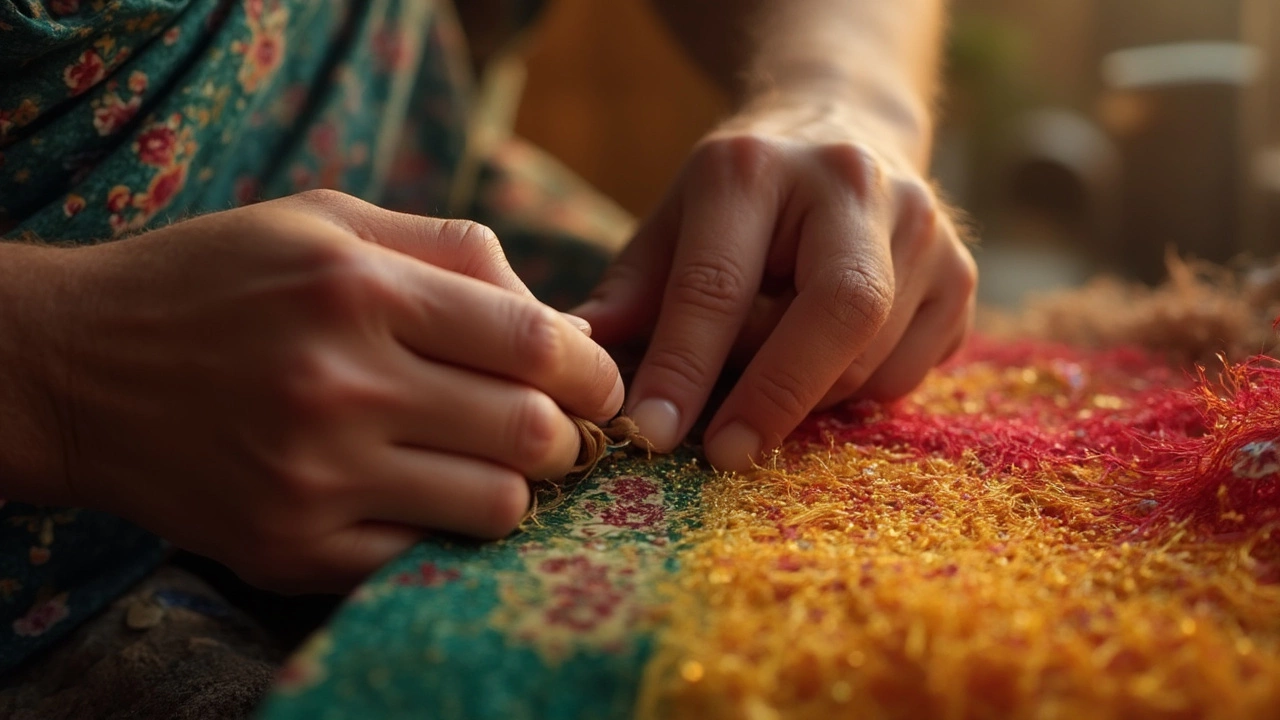
Brocade: Weaving Elegance and Tradition
Brocade is not just another fabric. It's where threads meet centuries of tradition to create wearable art that's alive with cultural history. If you're new to Indian fabrics, brocade is the one to watch out for. Known for its rich texture and luxurious patterns, this fabric uses an intricate technique that involves weaving raised designs into the cloth. Sounds fancy? It truly is.
What Makes Brocade Special?
Brocade pieces are often woven with metallic threads to give them that extra shine, a favorite for ceremonial garments and festive occasions. The detailing is something you'd have to see to believe. Each piece is a testament to the artisan's skill and patience, making it a treasured item in any wardrobe.
Made primarily in Varanasi, this fabric holds a cultural place in India and pops up often during weddings and traditional celebrations. Ever noticed the shimmering, damask-like texture on a wedding sari? That's the magic of brocade. It’s even become a symbol of status and luxury.
How to Spot Authentic Brocade
With luxury comes imitation, and brocade is no exception. Here are some tips to make sure you're getting the real thing:
- Check the Back: Genuine brocade will have a rich weave at the back. It's a sign that the intricate designs are woven, not printed.
- Metallic Shine: Authentic brocade often uses metallic threads, giving it a distinctive sheen. Fake ones skimp out on this detail.
- Feel the Fabric: Real brocade is firm yet luxurious to the touch. It doesn't feel lightweight or cheap.
Brocade is truly where tradition meets modern infatuation with all things luxurious. It's crafted with passion and worn with pride, making it an integral part of fashion accessories in India and beyond.
Real vs. Fake: How to Identify Genuine Fabrics
Falling for a synthetic imposter instead of the genuine article is a fashion faux pas nobody wants to make, especially when investing in expensive fabrics in India. Whether you're buying silk, pashmina, or brocade, knowing how to spot authenticity is crucial.
Silk: Separating the Real from the Faux
Start with the burn test—sounds dramatic, but it's pretty effective. Genuine silk, made from natural protein fibers, smells like burnt hair when it burns and leaves a fine ash. Fake silk, usually polyester, smells more like plastic and melts.
Pashmina: Not All Wool is Equal
Real pashmina is incredibly soft and can pass through a wedding ring, thanks to the thinness of its fibers. A luxury textile, it's warmer and feels much different from standard wool. If touching the fabric doesn't feel luxurious, it's likely a blend or something else entirely.
A Closer Look at Brocade
Real brocade, with its intricate designs, should show a finer weave because of its detailed craftsmanship. Flip it over to inspect the back; authentic brocade displays this artistry clearly with no loose threads.
General Tips for Spotting Authentic Fabrics
- Check Labels: Look for authenticity certifications, especially on pashmina products.
- Trust Your Senses: Feel the fabric. Authentic Indian fabrics like silk and pashmina have a noticeable difference in touch.
- Purchase from Reputable Sellers: This reduces the risk of buying counterfeit items.
To help you safeguard your purchases, here's a quick look at some common indicators of genuine vs. fake fabrics:
| Fabric | Genuine | Fake |
|---|---|---|
| Silk | Burns like hair, smells natural | Melts, smells like plastic |
| Pashmina | Soft, ultra-fine, passes through a ring | Coarse, thicker, may not pass the ring test |
| Brocade | Fine weave, intricate back | Loose threads, uneven patterns |
Tips for Buying Luxury Fabrics in India
When buying luxury textiles in India, you want to make sure you're getting the real deal, right? It's easy to get lost in the sea of vibrant colors and exquisite textures, but a keen eye can save you from costly mistakes.
Do Your Homework
Before you even set foot in a shop, know your stuff. Different fabrics have different characteristics. For example, pure silk will have a subtle sheen and a smooth texture. Pashmina should feel incredibly soft and warm, unlike lower-quality wool blends.
Check the Source
Always ask where the fabric originates from. Genuine Pashmina usually comes from Kashmir, while high-quality silk is often sourced from regions like Varanasi or Mysore. If the vendor seems unsure or evasive, consider it a red flag.
Touch and Feel
Don't be shy—touch the fabric. For silk, you're looking for a cool, smooth texture. The highest-grade Pashmina feels almost like air—light yet extraordinarily warm. Brocade should have texture due to its metallic threads.
Look for Authenticity Marks
Some genuine fabrics come with a seal of authenticity. For example, Pashmina shawls might have a government-approved label. Keep an eye out for any certification provided by the shop.
Bargaining Smart
Bargaining is part of the culture, but there's a fine line between haggling and lowballing. Knowing the market value of the fabric can give you an edge. However, be polite and fair. A good rule of thumb is to start by offering about 60-70% of the quoted price.
Consider the Workmanship
Check the stitching if you're buying a finished garment. Uneven stitches can be a sign of poor quality. The intricacy of embroidery can also be a marker of authenticity, especially for fabrics like brocade.
